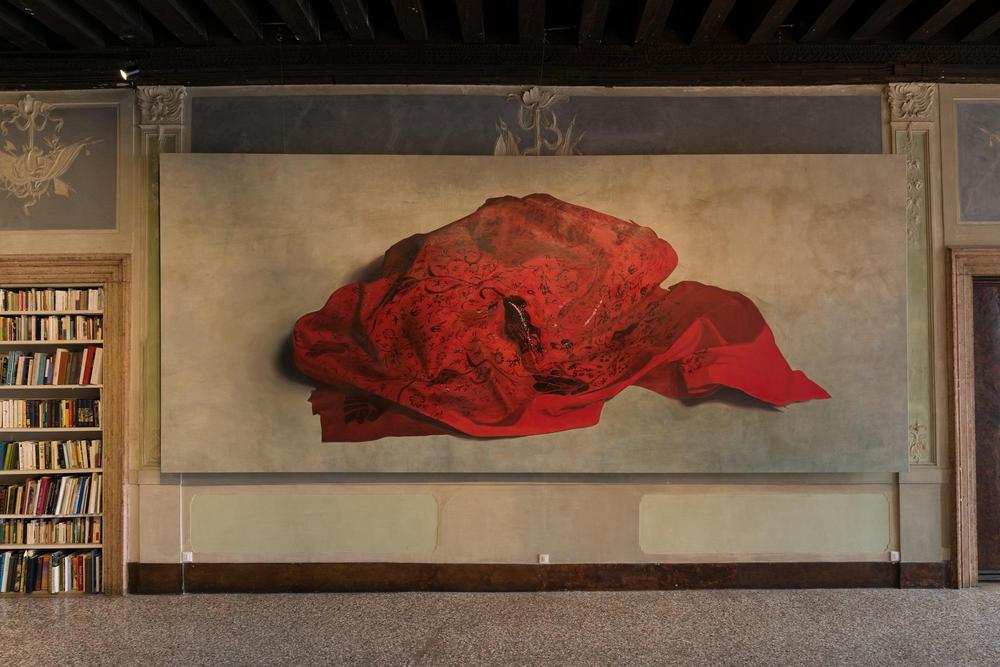Firelei Báez. Symbols of Power in Painted Cloth

Inspired by the history of eighteenth-century sumptuary “tignon laws” in New Orleans, which dictated that all women of African descent wear a knotted headdress as a mark of inferiority, Firelei Báez’s trompe l’oeil portrayal of a lavishly patterned headscarf in DREAMer (a demand for opacity that weaves no boundaries) (2017) embodies a narrative of resistance and cultural hybridity. The headdress, though required by law, became a fashion piece—a mode of adornment that subverted its oppressive attempt to maintain social hierarchies by keeping Black women from dressing elegantly. Its powerful symbolism here is further articulated in Báez’s patterning. Vines of indigo flowers surround panthers and raised fists—icons of the 1960s civil rights and Black Power movements in the United States. The fists double as azabaches, small gemstones carved in the shape of fists and worn as protective charms in some Latin American cultures.1 Báez also borrowed from her study of Persian textiles, in which patterns along the edge of a work are expressions of style unbound by cultural rules; here, these traditionally marginal figures are shifted to the center of the work.2
Firelei Báez, in “Art Talk: Firelei Báez in Conversation with María Elena Ortiz,” Pérez Art Museum, Miami, October 15, 2015 (posted November 12, 2015), video, 50:43 minutes, available at youtube.com/watch?v=-ko004S8Kv8. ↩︎
María Elena Ortiz, “A Future Yet to Be Unfolded,” in Firelei Báez: Bloodlines, ed. María Elena Ortiz (Miami: Pérez Art Museum, 2015), 14. ↩︎